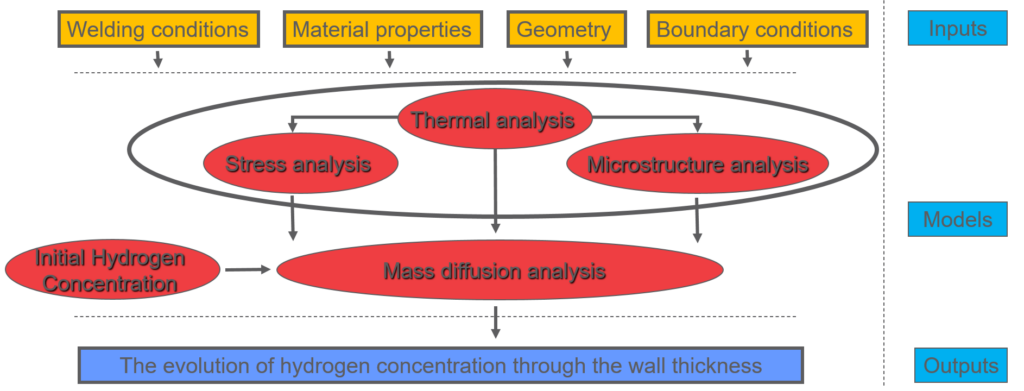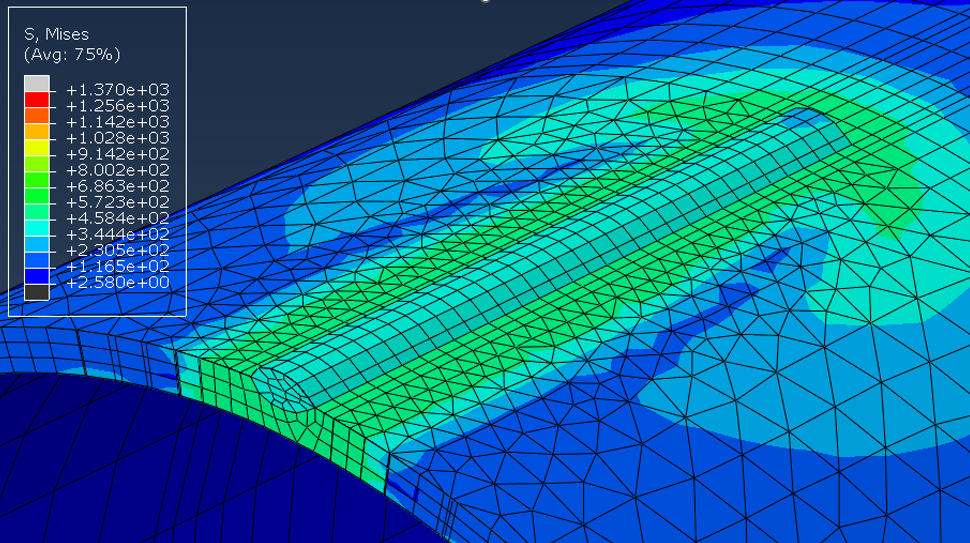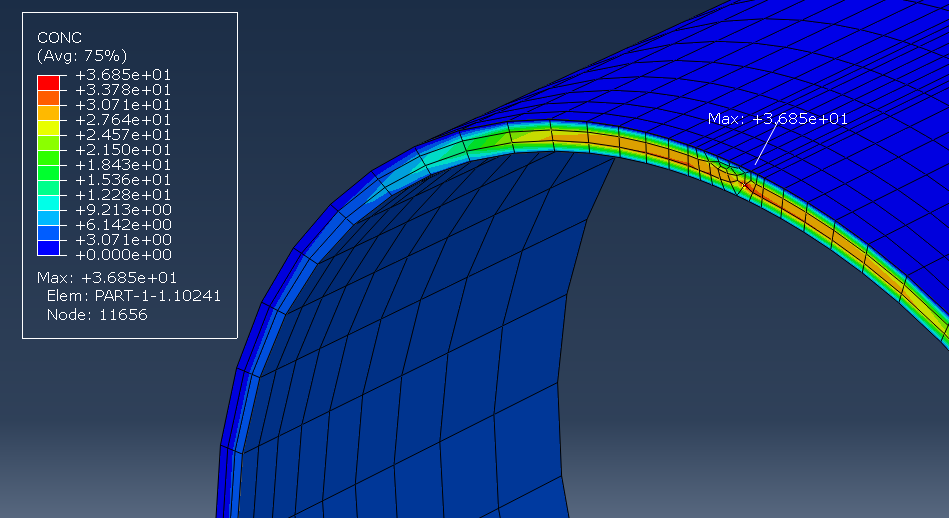
Harnessing the Power of Finite Element Analysis
Part 5: Hydrogen Diffusion Challenges in Pipelines
By Amin Moghaddas
Finite Element Analysis (FEA) has emerged as a critical tool for mass diffusion analysis across various industries. By simulating the movement of particles, such as gases or liquids, through materials under different conditions, FEA enables engineers to predict concentration profiles, optimize material performance, and mitigate potential risks. This capability is especially vital in sectors like battery design and material processing, where understanding diffusion behavior can greatly impact efficiency and safety.
In the realm of hydrogen transport, FEA provides valuable insights into how hydrogen diffuses through pipeline materials, particularly under high-pressure conditions and varying thermal gradients. By modeling these diffusion processes, engineers can anticipate and mitigate challenges such as embrittlement and cracking, which are crucial for maintaining the structural integrity of pipelines.
As hydrogen gains acceptance as a greener fuel alternative, there is a growing need to expand its transportation infrastructure through the construction of new pipelines or modifications to existing ones. Welding, a standard method for extending pipeline systems, raises concerns about hydrogen diffusion into the steel, which can lead to embrittlement. To address this challenge, EWI has developed a FEA-based modeling approach to examine hydrogen introduction and diffusion in pipeline steel during welding. In one study, EWI utilized FEA to simulate an axial bead-on-pipe weld on an X52 steel pipe with hydrogen only coming from an internal hydrogen gas pressure of 800 psi.
The hydrogen diffusion was modeled by using a sequentially thermal-mechanical-microstructure-hydrogen diffusion procedure, as shown in Figure 1.

The simulation results, illustrated in Figure 2, revealed residual stresses primarily as tension along the weld, with additional stresses near the weld tips.

at the end of welding
In a specific case with a weld heat input of 40 kJ/in, the FEA simulation indicated hydrogen diffusion with a peak concentration of 1.5 ppm near the heat-affected zone (HAZ). These levels are below the threshold for causing embrittlement. However, additional hydrogen, which would likely be brought in with the filler metal, could affect the structural integrity of the material.
When simulating a scenario with an initial hydrogen concentration of 5 ppm due to long-term exposure along the pipe’s internal surface, the FEA found a significant increase in hydrogen concentration within the HAZ, peaking at 36 ppm (Figure 3), which could pose a higher risk of material failure.

These findings underscore the critical role of FEA in predicting and managing hydrogen diffusion in pipelines. By facilitating detailed simulations, FEA enables pipeline operators to identify potential issues early, implement corrective actions, and ensure the safety and reliability of their infrastructure.
Understanding hydrogen diffusion through advanced FEA techniques is essential for the safe and efficient expansion of hydrogen pipeline infrastructure. For more information on how EWI’s FEA-driven hydrogen diffusion modeling can support your operations, please contact Bill Mohr and Amin Moghaddas.
Read other articles in this series:
- Part 1: Introducing Finite Element Analysis
- Part 2: Harnessing the Power of FEA: Structural Analysis
- Part 3: Harnessing the Power of FEA: Vibrational Analysis
- Part 4: Harnessing the Power of FEA: Heat Transfer Analysis
Amin Moghaddas is an Applications Engineer in the EWI resistance and solid-state group with more than 15 years of expertise in Finite Element Analysis (FEA). His primary focus is computational modeling of thermal processes, specializing in predicting temperature profile, residual stress, and distortion. Amin also has deep expertise in vibration analysis, designing and fabricating tooling for ultrasonic systems. Additionally, he is highly skilled in the structural analysis of components, including both static and dynamic simulations.